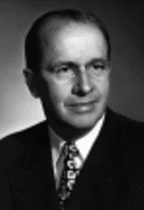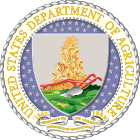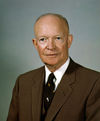Ezra Taft Benson
| Ezra Taft Benson | |
| Full name | Ezra Taft Benson |
|---|---|
| Born | August 4, 1899 |
| Place of birth | Whitney, Idaho |
| Died | May 30, 1994 (aged 94) |
| Place of death | Salt Lake City, Utah |
|
|
|
| Ordained | November 10, 1985 (aged 86) |
| Predecessor | Spencer W. Kimball |
| Successor | Howard W. Hunter |
|
|
|
| Called by | Heber J. Grant |
| Ordained | October 7, 1943 (aged 44) |
| Reason for ordination | Deaths of Sylvester Q. Cannon and Rudger Clawson[1] |
| End of term | May 30, 1994 (aged 94) |
| Reason for end of term | Death |
| Reorganization at end of term | Jeffrey R. Holland ordained |
|
|
|
|
|
|
| Called by | Heber J. Grant |
|---|---|
| Start of term | October 7, 1943 (aged 44) |
| End of term | November 10, 1985 (aged 86) |
| End reason | Became President of the Church |
| President of the Quorum of the Twelve Apostles | |
| Start of term | December 30, 1973 (aged 74) |
| End of term | November 10, 1985 (aged 86) |
| End reason | Became President of the Church |
| President of the Church | |
| Start of term | November 10, 1985 (aged 86) |
| End of term | May 30, 1994 (aged 94) |
| End reason | Death |
Ezra Taft Benson (August 4, 1899 – May 30, 1994) was the thirteenth president of The Church of Jesus Christ of Latter-day Saints (LDS Church) from 1985 until his death and was United States Secretary of Agriculture for both terms of the presidency of Dwight D. Eisenhower.
Contents |
Biography
Born on a farm in Whitney, Idaho, Benson was the oldest of eleven children. He was the great grandson of another Ezra Taft Benson, now known as "Ezra T. Benson", who was appointed by Brigham Young as a member of the Quorum of Twelve Apostles from 1846 on. Beginning his academic career at Utah State University, he was a 1926 graduate of Brigham Young University (after serving a church mission in Britain from 1921 to 1923). He received his masters degree from Iowa State University and did preliminary work on a doctorate at the University of California at Berkeley, but never completed this degree. Benson pursued a career in agriculture and later served in many church leadership positions. Just after receiving his masters he returned to Whitney to run the family farm, but later became the county agriculture extension agent. In 1926 he married Flora Smith Amussen; they had six children.
In 1939, when he was president of the church's Boise, Idaho, stake and working for the University of Idaho Extension Service, he moved to Washington, D.C. to become Executive Secretary of the National Council of Farmer Cooperatives, and became the first president of a new LDS Church stake there.
In August, 1989, he received the Presidential Citizens Medal from President George H. W. Bush.
Apostle
On October 7, 1943, both Benson and Spencer W. Kimball (1895–1985) became members of the church's Quorum of the Twelve Apostles, filling two vacancies created by the deaths of apostles that summer. Because Kimball was ordained first, Kimball was given seniority over Benson in the Quorum. Succession to the presidency of the church is by chronological order of ordination to apostleship, allowing Spencer W. Kimball to become president of the church years earlier than Benson. Upon Spencer W. Kimball's death in 1985, Benson became the president of the church.

Political career
In 1953, Benson was appointed U.S. Secretary of Agriculture by President Eisenhower. Benson accepted this position with the permission of Church President David O. McKay and therefore served simultaneously in the United States Cabinet and in the LDS Church's Quorum of the Twelve.
Benson opposed the system of government price supports and aid to farmers which he was entrusted by Eisenhower to administer, arguing that it amounted to unacceptable socialism. Nonetheless, he survived in his cabinet position for all eight years of Eisenhower's presidency. He was selected as the administrator-designate of the Emergency Food Agency, part of a secret group that became known as the Eisenhower Ten. The group was created by Eisenhower in 1958 to serve in the event of a national emergency.
Benson was a supporter of the John Birch Society, and an outspoken opponent of communism and socialism. He published a 1966 pamphlet entitled Civil Rights, Tool of Communist Deception.[2] Benson also referred to Martin Luther King Jr. as the "Communist leader of the so-called civil rights movement."[3]
Church presidency
Benson succeeded Kimball as President of the Quorum of the Twelve Apostles in 1973, and as President of the Church in 1985. During his early years as Church President, Benson brought a renewed emphasis to the distribution and reading of the Book of Mormon, reaffirming this LDS scripture's importance as "the keystone of [the LDS] religion." He is also remembered for his general conference sermon condemning pride.[4]
Scouting
Benson was a lifelong supporter of Scouting. He started in 1918 as assistant Scoutmaster. On May 23, 1949 he was elected a member of the National Executive Board of the Boy Scouts of America. He received the three highest national awards in the Boy Scouts of America—the Silver Beaver, the Silver Antelope, and the Silver Buffalo—as well as world Scouting’s international award, the Bronze Wolf.[5]
Health problems and death
Benson suffered poor health in the last years of his life from the effects of blood clots in the brain, dementia, strokes, and heart attacks, and was rarely seen publicly in his final years. He was hospitalized in 1992 and 1993 with pneumonia.
Benson died May 30, 1994 of congestive heart failure in his Salt Lake City apartment at the age of 94. Funeral services were held June 4, 1994 in the Salt Lake Tabernacle under the direction of Gordon B. Hinckley. He was buried near his birthplace in Whitney, Idaho, at the Whitney City Cemetery.
Published works
- Reed A. Benson., ed (1960). So Shall Ye Reap: Selected Addresses of Ezra Taft Benson. Deseret Book Company. ISBN B0007E7BME.
- The Red Carpet. Bookcraft. 1962. ISBN B0007F4WJI.
- Title of Liberty. compiled by Mark A. Benson. Deseret Book Company. 1964.
- An Enemy Hath Done This. Bookcraft. 1969. ISBN 0-88494-184-1.
- Civil Rights, Tool of Communist Deception. Deseret Book Co. 1969. ISBN (ASIN) B0007FRU42.
- God, Family, Country: Our Three Great Loyalties. Deseret Book Company. 1974. ISBN B0006CF3MC.
- Cross Fire: The Eight Years With Eisenhower. Doubleday. 1976. ISBN 0-8371-8422-3.
- This Nation Shall Endure. Deseret Book Company. 1977. ISBN 0-87747-658-6.
- Come Unto Christ. Deseret Book Company. 1983. ISBN 0-87747-997-6.
- The Constitution: A Heavenly Banner. Deseret Book Company. 1986. ISBN 0-87579-216-2.
- The Teachings of Ezra Taft Benson. Bookcraft. 1988. ISBN 0-88494-639-8.
- A Witness and a Warning: A Modern-Day Prophet Testifies of the Book of Mormon. Deseret Book Company. 1988. ISBN 0-87579-153-0.
- A Labor of Love: The 1946 European Mission of Ezra Taft Benson. Deseret Book Company. 1989. ISBN 0-87579-275-8.
- Come, Listen to a Prophet's Voice. Deseret Book Company. 1990. ISBN 0-87579-351-7.
- Missionaries to Match Our Message. Bookcraft. 1990. ISBN 0-88494-779-3.
- Elect Women of God. Bookcraft. 1992. ISBN 0-88494-838-2.
- Sermons and Writings of President Ezra Taft Benson. The Church of Jesus Christ of Latter-day Saints. 2003.
Benson also wrote the foreword to The Black Hammer, a book by Wes Andrews and Clyde Dalton. In the forward, Benson asserts that the civil-rights movement is being exploited by communists seeking revolution in America.
Notes
- ↑ Benson and Spencer W. Kimball were ordained on the same date to fill the vacancies in the Quorum of the Twelve resulting from the deaths of Sylvester Q. Cannon and Rudger Clawson.
- ↑ Civil Rights, Tool of Communist Deception by Ezra Taft Benson
- ↑ Mormons Discuss Racial Inequality by The Daily Utah Chronicle, January 15, 2003
- ↑ "Beware of Pride". The Church of Jesus Christ of Latter-day Saints. http://lds.org/ldsorg/v/index.jsp?hideNav=1&locale=0&sourceId=d8ff27cd3f37b010VgnVCM1000004d82620a____&vgnextoid=2354fccf2b7db010VgnVCM1000004d82620aRCRD. Retrieved 2008-05-05.
- ↑ "Presidents of the Church". The Church of Jesus Christ of Latter-day Saints. http://www.ldsces.org/inst_manuals/pres-sm/pres-ch-13-15.htm. Retrieved 2009-08-22.
See also
- Steve Benson (Grandson and Pulitzer Prize Winning Cartoonist)
References
- Ensign Editor (July 1994). President Ezra Taft Benson: A Sure Voice of Faith. Ensign. p. 8.
- Monson, Thomas S. (July 1994). President Ezra Taft Benson—A Giant among Men. Ensign. p. 35.
External links
- Papers of Ezra Taft Benson, Dwight D. Eisenhower Presidential Library
- Ezra Taft Benson Oral History finding aid, Dwight D. Eisenhower Presidential Library
- Grampa Bill's G.A. Pages: Ezra Taft Benson
- A biography of Ezra Taft Benson
- Ezra Taft Benson's comments on freedom and the U.S. Constitution
- Ezra Taft Benson's comments on freedom, the U.S. Constitution and the Founding Fathers
- Some Speeches (audio) of Ezra Taft Benson
- audio excerpt from “Our Immediate Responsibility.” Devotional Address at Brigham Young University. circa 1968.”
- Papers of Miller F. Shurtleff, assistant to Ezra Taft Benson, Dwight D. Eisenhower Presidential Library
| The Church of Jesus Christ of Latter-day Saints titles | ||
|---|---|---|
| Preceded by Spencer W. Kimball |
President of the LDS Church November 10, 1985 — May 30, 1994 |
Succeeded by Howard W. Hunter |
| Preceded by Spencer W. Kimball |
President of the Quorum of the Twelve Apostles December 30, 1973–November 10, 1985 |
Succeeded by Marion G. Romney |
| Preceded by Spencer W. Kimball |
Quorum of the Twelve Apostles October 7, 1943–November 10, 1985 |
Succeeded by Mark E. Petersen |
| Political offices | ||
| Preceded by Charles F. Brannan |
United States Secretary of Agriculture Served under: Dwight D. Eisenhower 1953–1961 |
Succeeded by Orville Freeman |
|
|||||||
|
|||||||||||||||||||||||||||||||||||||
|
|||||
|
|||||
|
|||||

